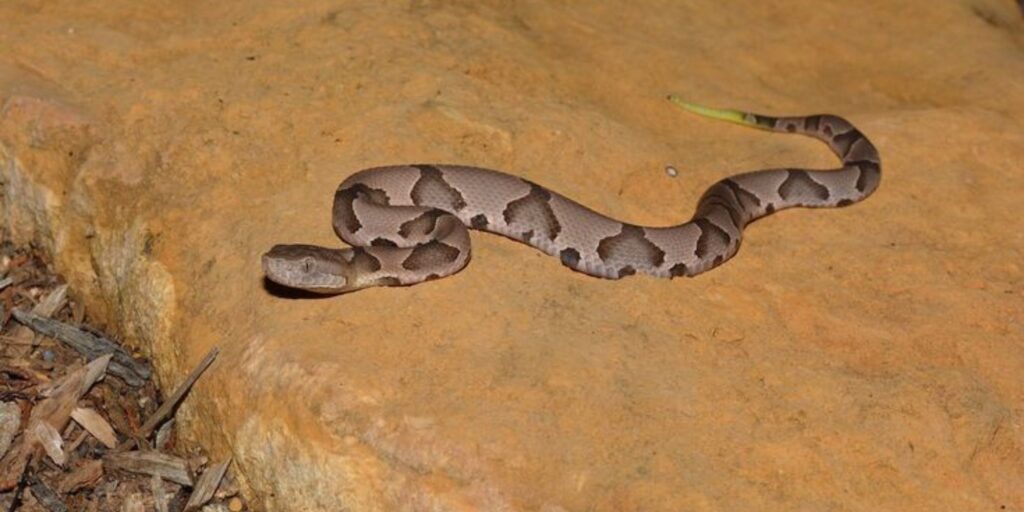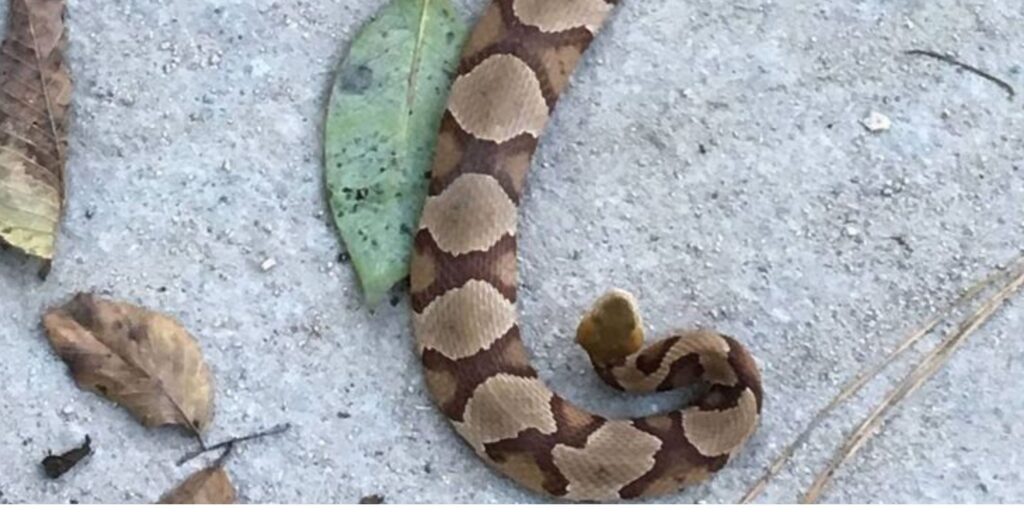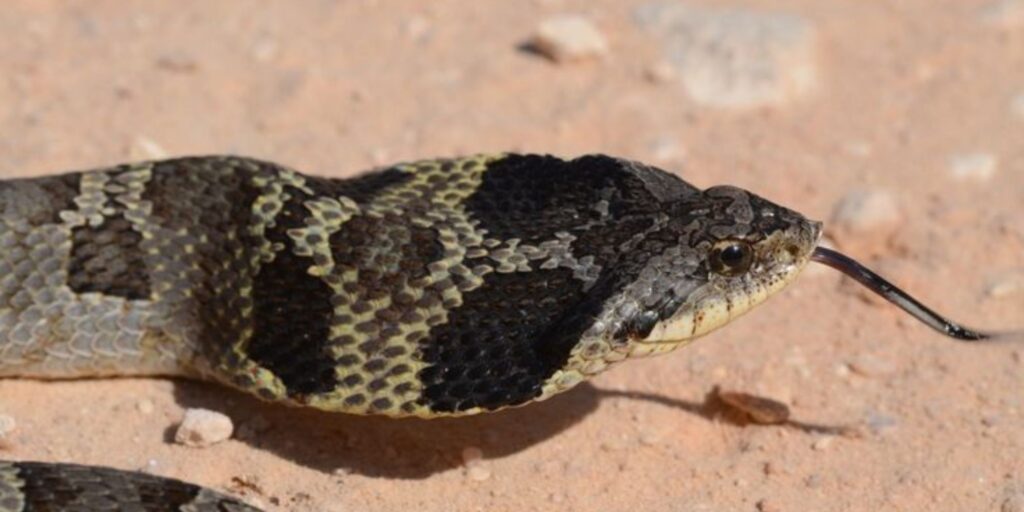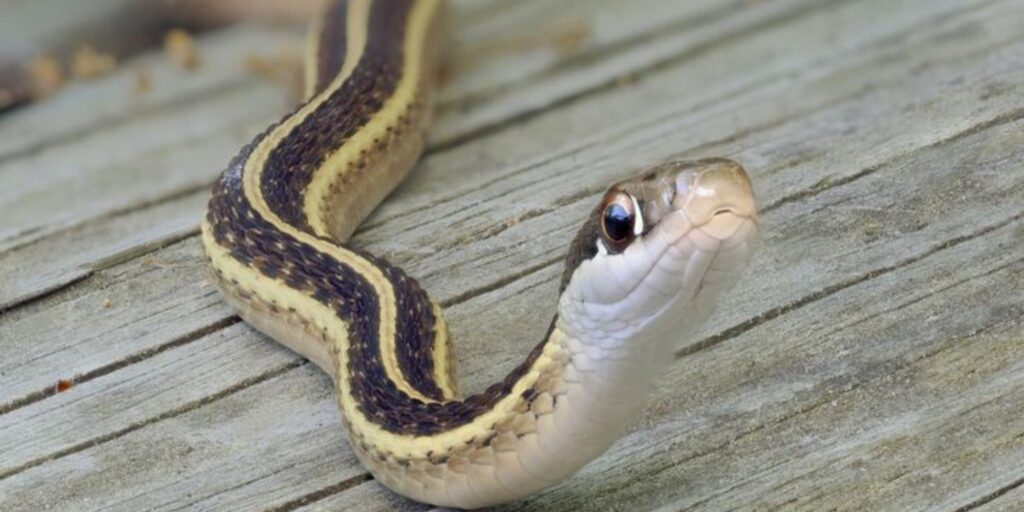Introduction
North Carolina is a treasure trove of biodiversity, and its snake population is no exception. With over 37 different types of snakes slithering through the state’s forests, wetlands, and mountains, nature lovers have an exciting opportunity to observe these fascinating creatures up close. Whether you’re a seasoned herpetologist or simply curious about what lies beneath the leaves, this guide will help you navigate the rich tapestry of North Carolina’s serpentine inhabitants. From venomous species that command respect to harmless non-venomous varieties that play their part in the ecosystem, there’s much to discover about these captivating reptiles. Join us as we dive deep into the diverse types of North Carolina snakes!
Types of North Carolina Snakes :Venomous and Non-Venomous Snakes in North Carolina
North Carolina is home to both venomous and non-venomous snakes, each playing a vital role in the ecosystem. Venomous snakes are generally feared but understanding them can lessen anxiety around encounters. The Timber Rattlesnake and Pygmy Rattlesnake are among the most notable species, known for their distinctive markings.
On the other hand, non-venomous snakes like rat snakes and garter snakes offer essential benefits to pest control. They help maintain balance within local populations of rodents and insects. Recognizing these differences enhances appreciation for all snake types found in North Carolina’s rich habitats.
Types of North Carolina Snakes :Overview of Venomous Snakes

North Carolina is home to several venomous snake species that evoke both fascination and caution. Among them, the Timber Rattlesnake stands out, known for its distinctive rattle and potent bite. These snakes can typically be found in wooded areas.
Another notable species is the Eastern Copperhead, recognized by its hourglass-shaped markings and coppery hue. It prefers habitats such as wetlands and deciduous forests.
There’s the Pygmy Rattlesnake, a smaller but equally dangerous relative of the Timber Rattlesnake. Its subtle coloration allows it to blend seamlessly into leaf litter or grasslands, making encounters less predictable.
Types of North Carolina Snakes :Common Non-Venomous Snakes to Look Out For
North Carolina is home to a variety of non-venomous snakes that are fascinating to observe. These creatures play vital roles in the ecosystem, helping control pest populations and contributing to biodiversity.
Among the most common non-venomous types are the Eastern Rat Snake and the Black Racer. Their sleek bodies and swift movements make them impressive hunters in their natural habitats.
You may also encounter Garter Snakes, which come in different colors and patterns. They often bask in warm sunlight or glide through gardens, adding beauty to any outdoor experience while remaining harmless to humans.
Types of North Carolina Snakes :Specific Snake Species in North Carolina
North Carolina is home to a fascinating array of snake species, each with its unique traits. The Rat Snake, known for its ability to climb trees, is often spotted in rural areas. Its striking patterns can vary but typically feature shades of black and yellow.
The Ring-Necked Snake stands out with its distinctive neck ring and small size. This secretive creature prefers moist habitats and feeds on slugs and worms.
Another eye-catching inhabitant is the Rainbow Snake, famous for its iridescent scales that shimmer in sunlight. Often found near water bodies, this non-venomous beauty captivates many nature enthusiasts in the region.
Types of North Carolina Snakes :Rat Snake (Pantherophis alleghaniensis)
The Rat Snake, scientifically known as Pantherophis alleghaniensis, is a fascinating non-venomous species found throughout North Carolina. With its striking appearance of black or gray scales and distinctive patterns, it can often be spotted gliding through trees or basking in the sun.
These snakes are excellent climbers and primarily feed on rodents, making them beneficial for controlling pest populations. Their diet also includes birds and their eggs, showcasing their adaptability in various habitats.
Rat Snakes are generally docile creatures but will defend themselves if threatened. Observers may witness them mimicking a rattlesnake by shaking their tails when startled—a clever survival tactic!
Ring-Necked Snake (Diadophis punctatus)
The Ring-Necked Snake is a small and striking species found throughout North Carolina. Typically measuring around 10 to 15 inches long, it showcases a smooth, glossy body with a distinct yellow or orange neck ring that sets it apart from other snakes.
These secretive creatures prefer moist environments like forests, gardens, and wetlands. They often hide under rocks or leaf litter during the day. When threatened, they may display their vibrant colors as a warning sign.
Primarily feeding on earthworms and small amphibians, Ring-Necked Snakes play an important role in maintaining the ecosystem’s balance. Their non-venomous nature makes them harmless to humans.
Rainbow Snake (Francia erytrogramma)
The Rainbow Snake is a striking sight in North Carolina’s wetlands, often found near swamps and slow-moving rivers. With its iridescent scales that shimmer like rainbows under sunlight, it captivates nature lovers and photographers alike.
These snakes are non-venomous and primarily feed on eel-like prey, showcasing their adept swimming skills. Their slender bodies can reach lengths of up to 4 feet, making them agile hunters in the aquatic environment.
Though elusive by nature, spotting a Rainbow Snake can be a thrilling experience for those venturing into its habitat. Respecting their space ensures these beautiful creatures continue thriving in our ecosystems.
Carolina Swamp Snake (Liodytes pajama)
The Carolina Swamp Snake, known scientifically as Liodytes pygaea, is a fascinating creature native to the wetlands of North Carolina. These snakes are typically small and can reach lengths of about two feet. Their slender bodies are often adorned with striking patterns that enhance their camouflage in muddy waters.
Primarily found in swamps and marshes, they thrive in aquatic environments. Their diet mainly consists of amphibians and fish, making them excellent hunters within their habitat.
Unlike many other snake species, Carolina Swamp Snakes are non-venomous and pose no threat to humans. Observing these elusive reptiles can be a rewarding experience for any nature enthusiast.
Northern Water Snake (Nerodia sipedon)
The Northern Water Snake is a robust and adaptable species found throughout North Carolina’s rivers, lakes, and wetlands. With its distinctive dark brown or grayish body adorned with lighter bands, it often resembles the venomous cottonmouth but poses no threat to humans.
These non-venomous snakes primarily feed on fish and amphibians, making them excellent swimmers. They can be spotted basking on rocks or logs near water sources.
While they may appear intimidating when threatened, Northern Water Snakes are generally shy creatures that prefer to retreat rather than confront potential dangers. Observing them in their natural habitat can be an exciting experience for nature lovers.
Timber Rattlesnake (Crotalus horridus)
The Timber Rattlesnake is one of North Carolina’s most iconic serpents. Recognizable by its distinct rattling tail, this snake can be found in mountainous and forested regions. With a striking pattern of yellow, brown, or gray, it blends seamlessly into its surroundings.
Timber Rattlesnakes are typically shy and prefer to avoid human interaction. They tend to bask on warm rocks but will quickly retreat if threatened. Their venom is potent; however, bites are rare due to their elusive nature.
This species plays a vital role in maintaining the ecosystem balance. By controlling rodent populations, they help support healthier environments for various wildlife.
Pygmy Rattlesnake (Sistrurus miliarius)
The Pygmy Rattlesnake, or Sistrurus miliarius, is a small yet fascinating species found in the southeastern parts of North Carolina. Typically measuring only 18 to 30 inches long, this rattler can be easily overlooked due to its diminutive size.
Its coloration ranges from gray to brown with dark bands and spots that help it blend seamlessly into leaf litter. This natural camouflage makes spotting quite a challenge for even the most seasoned herpetologists.
Despite being venomous, Pygmy Rattlesnakes are generally not aggressive. They prefer to stay hidden, relying on their stealthy nature rather than confrontation when threatened.
Understanding North Carolina’s Snake Population

North Carolina boasts a rich biodiversity, and its snake population is no exception. With over 30 species of snakes recorded in the state, enthusiasts have plenty to explore. From unique habitats like wetlands and forests to urban areas, these reptiles adapt well.
Understanding their role in the ecosystem is crucial. Snakes help control pest populations, contributing to ecological balance. Observing them in their natural habitat can reveal fascinating behaviors.
Education plays a key role in fostering appreciation for these creatures. Knowing which types of North Carolina snakes are present aids in safe encounters and protects both humans and wildlife alike.
A Complete List of Snakes in North Carolina
North Carolina is home to a rich diversity of snakes, contributing to its unique wildlife. This southern state boasts over 30 different species, each adapted to distinct habitats ranging from mountains to swamps.
Among the most notable are the venomous Timber Rattlesnake and Pygmy Rattlesnake. Non-venomous varieties include the Rat Snake and Northern Water Snake, each playing vital roles in their ecosystems.
Understanding these species enhances your experience while exploring nature. Whether you’re hiking or observing wildlife, knowing what snakes inhabit North Carolina enriches your adventures outdoors.
Interacting with Snakes in North Carolina
North Carolina is home to a rich diversity of snakes, and understanding how to interact with them can enhance your outdoor experiences. Most snakes are harmless and play vital roles in the ecosystem. Observing them from a distance allows you to appreciate their beauty without disturbing their habitat.
If you encounter a snake on your hike, remain calm. Give it space to move away; they usually prefer flight over confrontation. Educating yourself about which types of North Carolina snakes are venomous versus non-venomous will help reduce fear.
Encouraging coexistence with these creatures fosters respect for nature’s balance. Snakes contribute significantly by controlling pest populations, making them an essential part of our environment.
Coexisting with Snakes in Nature
Coexisting with snakes can enhance your outdoor experience. These fascinating creatures play essential roles in our ecosystems, controlling pest populations and maintaining balance.
When hiking or exploring nature, it’s important to remain calm if you encounter a snake. Most are not aggressive and prefer to avoid humans. Give them space, and they’ll likely move on.
To coexist peacefully, educate yourself about the types of North Carolina snakes you might see. Knowing which ones are harmless versus venomous empowers you to appreciate these reptiles without fear while enjoying the beautiful landscapes around you.
Tips for Identifying and Avoiding Venomous Snakes
When exploring North Carolina’s wilderness, knowing how to identify venomous snakes is crucial. Look for key traits like triangular-shaped heads and slit-like pupils. Many venomous species also have distinct coloration or patterns that set them apart from non-venomous ones.
Avoiding encounters is equally important. Stick to well-trodden paths and avoid tall grass or dense underbrush where snakes might hide. Wear sturdy boots and long pants for added protection during hikes.
If you spot a snake, maintain distance. Most will retreat if they sense you approaching. Respect their space, and you’ll enjoy nature safely while minimizing potential risks.
Additional Resources for Snake Enthusiasts

For those passionate about snakes, numerous resources are available to enhance your knowledge. Websites like the North Carolina Wildlife Resources Commission offer valuable insights into local species and their habitats.
Books such as “Snakes of North Carolina” provide in-depth information, including identification tips and behavioral traits.
Joining local herpetological societies can connect you with fellow enthusiasts for field trips and workshops. Social media platforms also host groups dedicated to snake appreciation, where you can share experiences and ask questions. Engaging with these communities enriches your understanding of North Carolina’s fascinating snake population.
Further Reading and References
For those eager to dive deeper into the fascinating world of snakes in North Carolina, there are plenty of resources available. Field guides and local nature websites can provide detailed information on identification and behavior. The North Carolina Museum of Natural Sciences offers educational programs and workshops focused on reptile conservation.
Books by herpetologists or wildlife experts can also enrich your understanding. Online forums and groups dedicated to snake enthusiasts are great for sharing experiences and insights. By exploring these materials, you’ll gain a broader perspective on these incredible creatures that share our environment.



